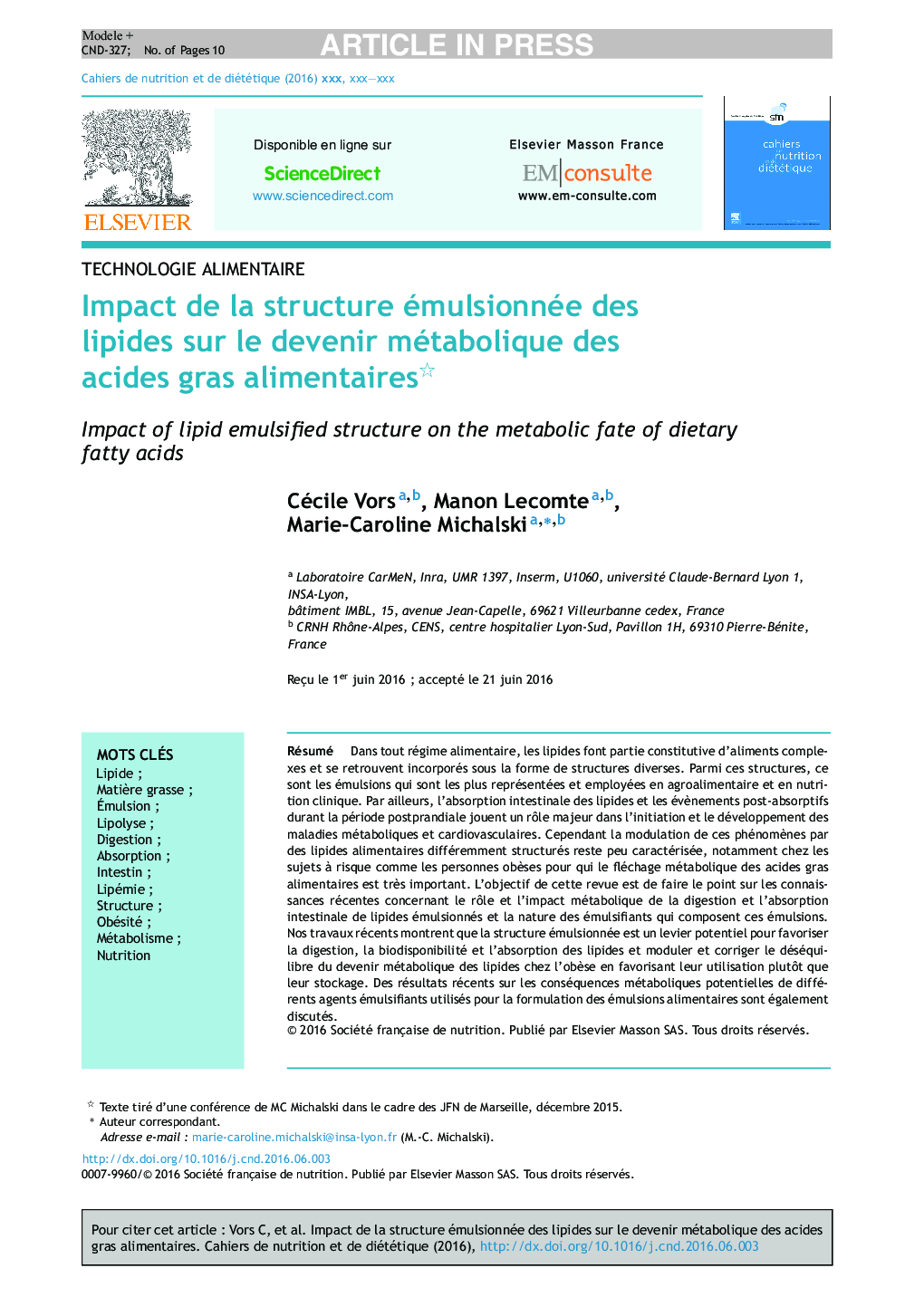| Article ID | Journal | Published Year | Pages | File Type |
|---|---|---|---|---|
| 5571626 | Cahiers de Nutrition et de Diététique | 2016 | 10 Pages |
Abstract
In the human diet lipids are part of complex food products and are incorporated in various structures. Among the latter, emulsions are the most often employed in the food industry and clinical nutrition. Moreover, intestinal lipid absorption and post-absorptive phenomena during the postprandial phase play a major role in the onset and development of metabolic and cardiovascular diseases. However, the modulation of such phenomena by different structured dietary lipids remains poorly characterized, particularly among individuals with metabolic risk like obese subjects for whom the metabolic handling of dietary fatty acids is of utmost metabolic importance. The objective of this article is to review recent knowledge regarding the role and the metabolic impact of digestion and intestinal absorption of emulsified lipids and the nature of emulsifiers used as surface-active agents in emulsions. Our recent studies show that emulsified lipid structure can be a powerful tool to favor digestion, bioavailability and absorption of lipids and can modulate the imbalance of the metabolic handling of lipids in obese subjects, by favouring their beta-oxidation rather than their storage. Recent results on the potential metabolic consequences of different emulsifiers used for food emulsion formulation are also discussed.
Related Topics
Health Sciences
Medicine and Dentistry
Endocrinology, Diabetes and Metabolism
Authors
Cécile Vors, Manon Lecomte, Marie-Caroline Michalski,
